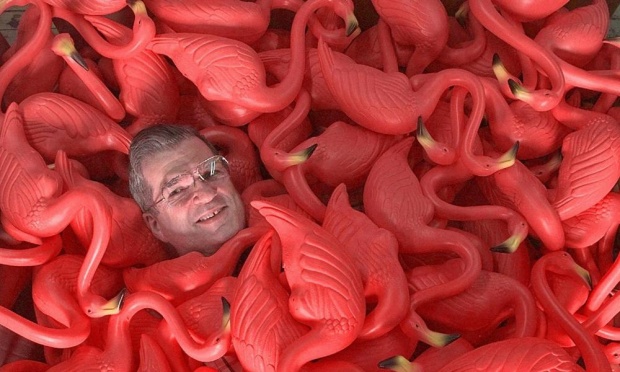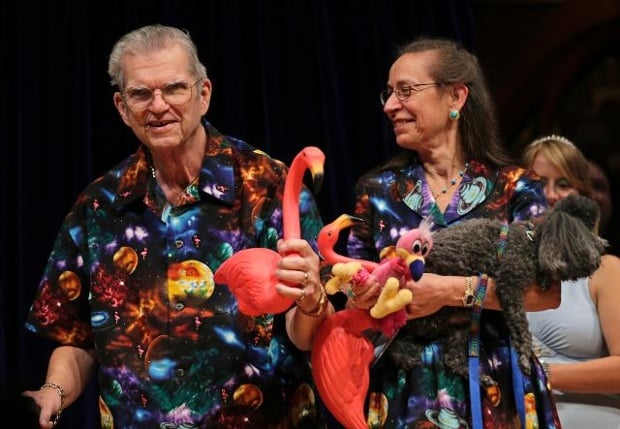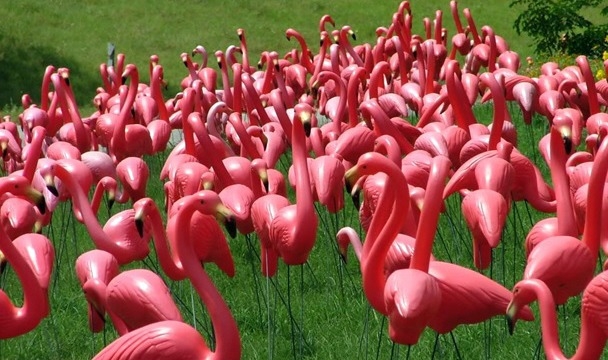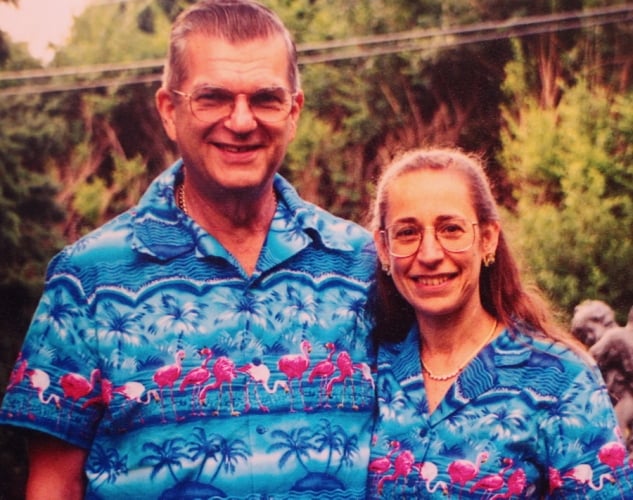People
Pink Lawn Flamingo Creator Donald Featherstone Dies, But His Creations Live On


Sarah Cascone

Donald Featherstone, who died on Monday at 79, may not be a household name, but the artist was the creator of the ubiquitous pink plastic flamingo, found on suburban lawns across the country for over half a century.
Having suffered for years from Lewy body dementia, he died at an elder care facility in Fitchburg, Massachusetts, Featherstone’s wife, Nancy, told the Associated Press.
A classically trained sculptor who studied at the Worcester Art Museum’s school, Featherstone worked for plastics company Union Products.
He was turned on to the job by friend who had heard the company was looking to move into 3-D designs. Featherstone signed on, he admitted to the Leominster Champion in 2006, due to “a great fear of starving to death. My friend said plastic places will prostitute my work and I’d make no money, but it was worth a try.”
Featherstone created the flamingo in 1957, privately dubbing it the phoenicopteris ruber plasticus. He based the lawn ornament on a photo he had seen in National Geographic.
“They have been called very tacky, but more than not, they’ve been called fun,” he told the Champion. “I loved what I did . . . things I did made people happy, and that’s what life is all about.”

Donald Featherstone with his wife Nancy in 2012.
Photo: Charles Krupa, courtesy AP Photo.
Though Featherstone created hundreds of plastic products during his 43-year career at Union, the flamingo remained his triumph. After having risen the ranks to company president, he retired in 1999. (The company folded in 2006.)
Millions of the cheerfully gaudy birds have been sold in the past 57 years. In honor of the plastic flamingo’s 40th birthday, Featherstone solicited the nation to send in photos of the lawn ornaments in particularly quirky or beautiful settings, and published the best ones in a book, The Original Pink Flamingos: Splendor on the Grass.
In her essay “The Plastic Pink Flamingo: A Natural History,” published in The American Scholar in 1999, Jennifer Price attributed to the lawn ornament’s popularity to two forces: The era’s plastics industries prized vivid colors, particularly hot pink, which were considered “forward-looking rather than old-fashioned, just right for a generation, raised in the Depression, that was ready to celebrate its new affluence.”

Lawn flamingos, originally created by Donald Featherstone.
Photo via: the Photo News.
The other factor, of course, was the bird’s association with Florida: land of leisure, sunshine, and opulence, as well as its association with the new get-rich-quick desert paradise of Las Vegas, famously home to gangster Bugsy Siegel’s Flamingo Hotel.
Harvard University recognized Featherstone’s masterpiece of kitsch in 1996 by presenting him the Ig Nobel Prize in art. (The award honors unusual or trivial achievements, in a parody of the Nobel Prize.)
In his later years, Featherstone became something of a viral sensation when his wife wrote an article for the Guardian about how she had been making them matching outfits, usually featuring bold-printed fabrics, for 35 years.

Donald and Nancy Featherstone.
Photo: Jae Donnelly, courtesy NI Syndication.
“I always make myself a feminine version of Donald’s outfit, though; it’s not unisex, because I like ruffles and girly things. I’d describe our style as traditional—we’re not concerned about following fashion,” Nancy wrote of their eye-catching clothes.
“Whenever I see flamingo fabric, I buy some and make us an outfit; we now have more than 40 in their own special closet,” she added.
The Featherstones had some 600 matching looks in total.
The two had been married for 40 years, and have two surviving children, four grandchildren and two great-grandchildren.